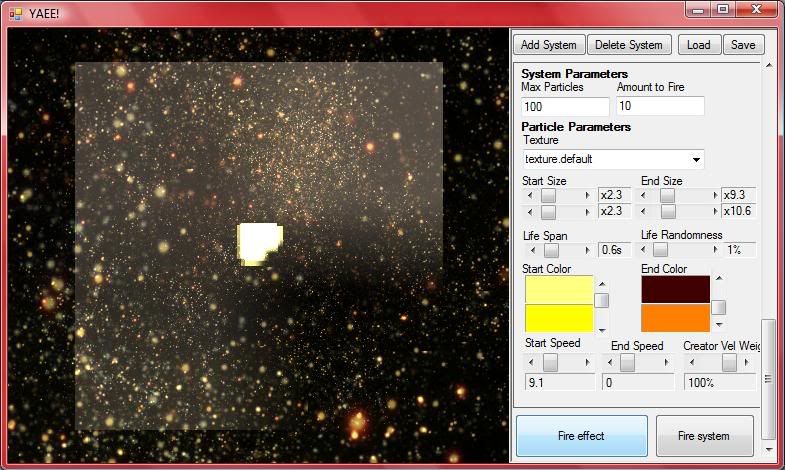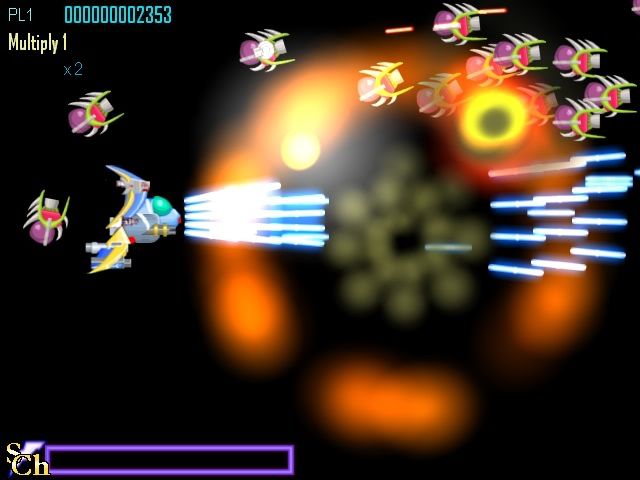In the spirit of continually learning I'm going to do a postmortem of Space Combat Sim as a school project. Don't worry though, this doesn't mean the project is dead. But the priority now is on having fun with it again, instead of busting my ass getting it demo-ready.
I'm basing my postmortem on those typically found on Gamasutra. If you haven't read one do so, they're
quite eye-opening.
What Went Right1. Tight, focused scopeGame projects can be massively complex. Particularly when they're 3d action-oriented online ones :). Most of my early projects started out relatively simply but grew into complex behemoths due to "wouldn't it be cool if" syndrome. For example a simple game where you killed enemies before they could leave the screen evolved into a vertical shmup with procedurally generated levels.
For Space Combat Sim the scope was set in stone from the beginning. The project would be a multiplayer game combining elements of X-Wing, Quake 3 and Counterstrike. Tools were only to be developed for the game if they were absolutely necessary (ignoring content pipeline extensions only two tools were made, one for creating hit boxes and one for creating effects.)
With the scope in hand I was able to set out a series of broad goals which defined how the game was to be built from the ground up. These broad goals were converted into a 24 page document describing all of the required features of the game (required for the course.) That was then turned into the detailed list of tasks that needed to be done to produce the game. Making the game was then simply a matter of finishing all of the tasks on the list. Since all time was spent exclusively on those broad goals the amount of wasted effort was minimized.
2. Continuous integrationContinuous integration means always having a working version of a project while it's being built. There may be missing features, and if it's a game it may look and play like crap, but it at least exists. One thing that
always happens with software projects is scheduling issues. Feature creep, scope creep, unanticipated challenges or whatever, eventually something will cause a project to go off course. Having a working version means that even if the deadling is looming at least
something is there for everyone to see.
In the case of Space Combat Sim, a lot could go wrong. I was challenging myself technically since I hadn't produced a 3D game before, nor had I produced a multiplayer game before. Except for a few occasions I succeeded in this goal. This was very helpful in keeping me from being too ambitious in coding features and forced me to break down overly lofty goals into more doable tasks.
3. Scrum-like schedulingSpace Combat Sim used a barebones version of Scrum, albeit with each cycle of development being much longer than specified. By dividing the project into sprints and assigning a set of real deliverables to be completed in each I was able to keep on task. The faculty's imposed limit of about 8 hours per deliverable also helped keep tasks from meandering and getting out of control.
What Went Wrong1. Not enough time spent getting toolsThe first four or five months of development time were spent building up the back-end code needed to support the first network session. A huge amount of that could have been saved if I spent that first month just looking at rendering engines and playing with them. No more shader development, effect tool development, etc. etc. in all about two months of work there. Sure, I'd still have to spend time on managing game objects and networking but that was kinda the point of the game. Instead I gave up after about two weeks of looking at tools, honestly, because it was boring.
2. Working soloEspecially in combination with making my own tools working solo made the game take a painfully long time to get done. It would have been quite nice if I could have focused more on object management, networking and gameplay while someone else took care of UI, loading, and other backend stuff. With only myself I generally had to focus on every task of game development which tended to result in polish getting short shrift.
The game's code is poorly documented in places, hacks abound and not all of the visuals that I wanted are in the game.
3. Continuous integrationContinuous integration has proven to be a double-edged sword. On one hand, having a working copy of Space Combat Sim all the time was motivating and helped reduce the impact of schedule slippage. On the other hand it made me midjudge whether a particular piece of the game's architecture was actually done or not. The area where this resulted in the most wasted time was in the game's startup sequence. The issue was that, while the game did indeed have space for its menus and loading sequence it wasn't really set up with its final usage in mind.
Having something that works, and having something that works
correctly are different things. Continuous integration overall has been very useful, but at the same time it can cause one to do something that is expedient and fast rather than the correct solution suitable for the remainder of the project.
ConclusionOverall I'd consider Space Combat Sim a modest success. I met my basic goal, which was to produce a multi-player combat game in space. My more lofty goals of having mission-oriented combat, style etc. weren't met due to time pressures though. The experience has definately been worth while and I learned a lot about actual project development through it.
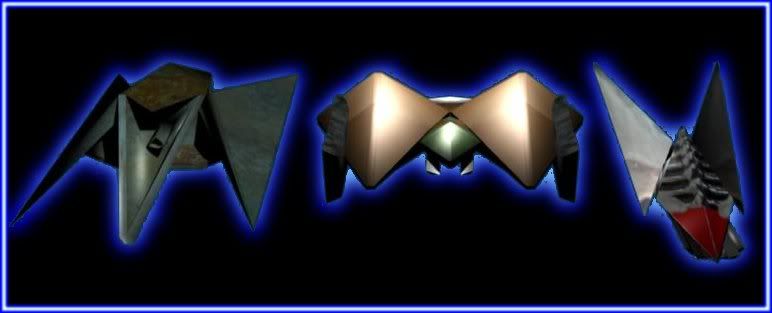

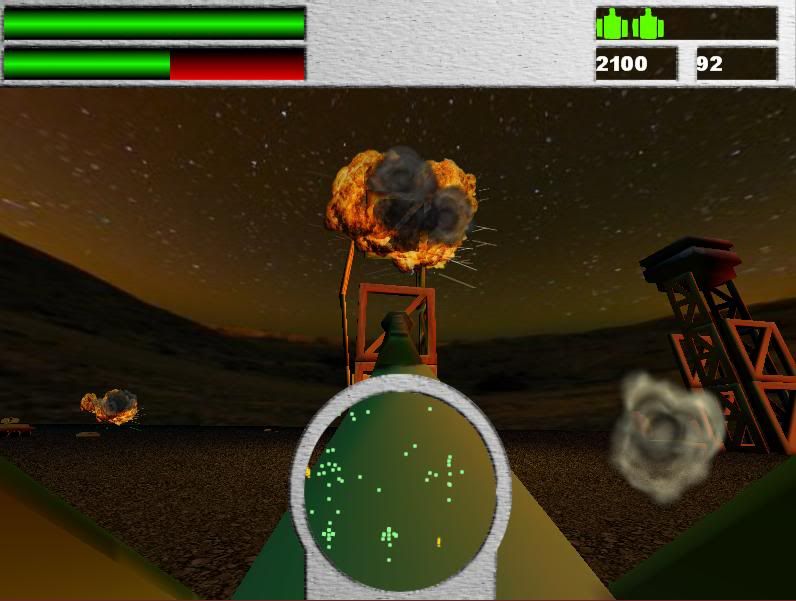
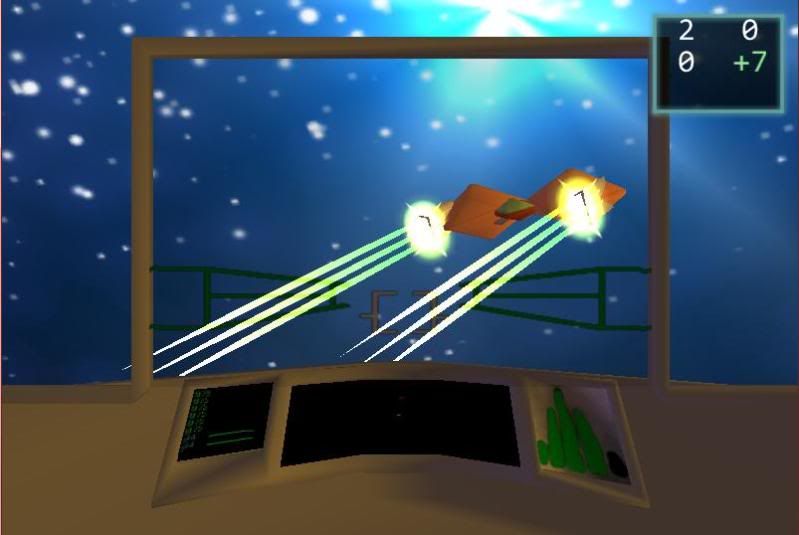
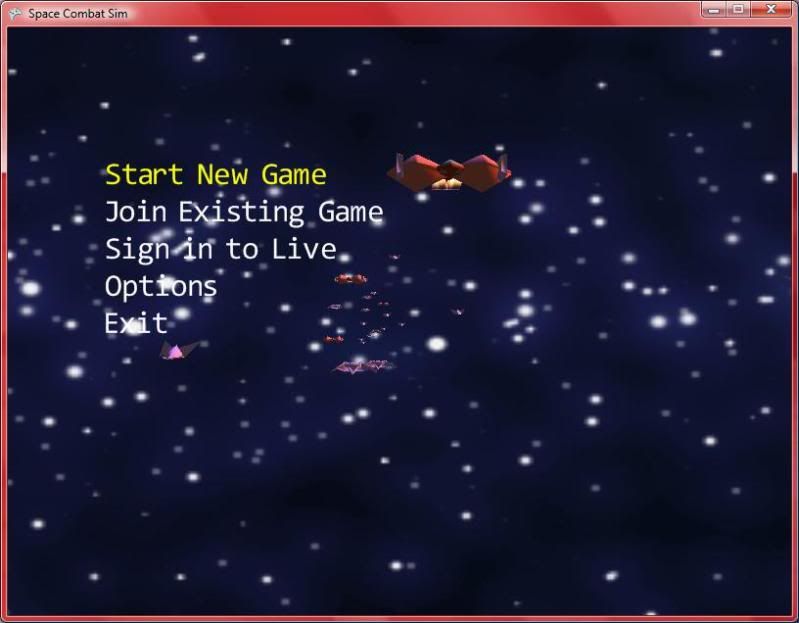

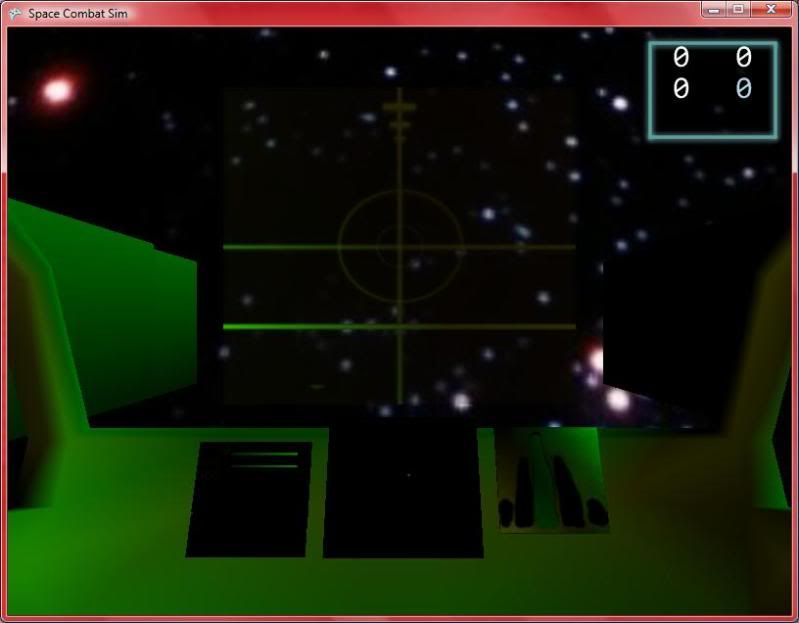
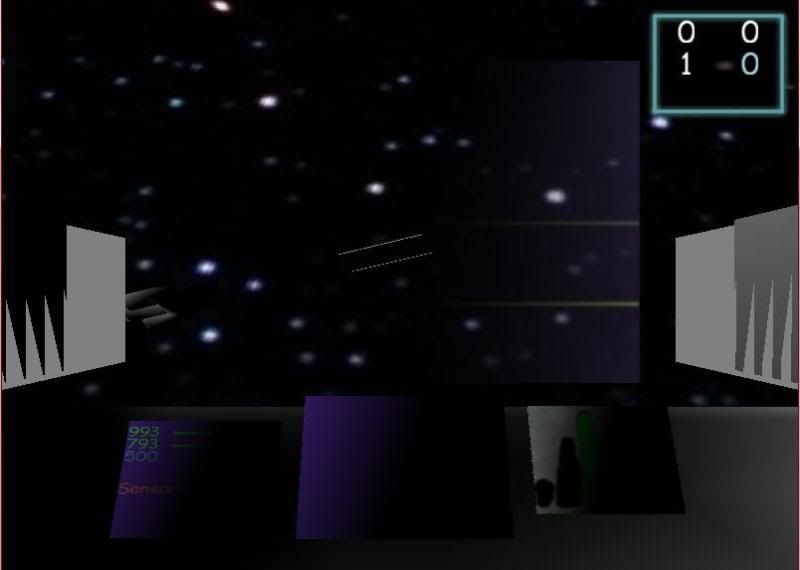 I'll leave you with this screenshot of one (poorly lit) player shooting grey bullets. Notice I have some (glitched) lighting working now :)
I'll leave you with this screenshot of one (poorly lit) player shooting grey bullets. Notice I have some (glitched) lighting working now :)